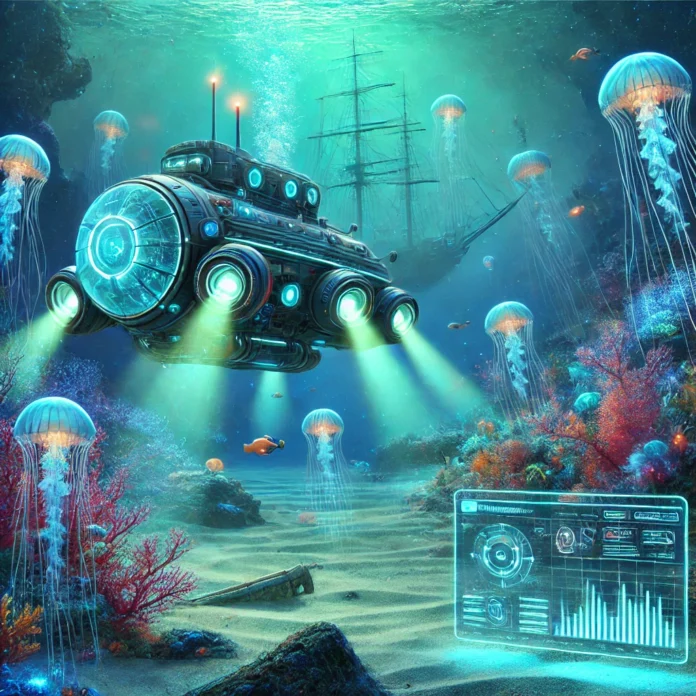The ocean, covering more than 70% of Earth’s surface, remains one of the least explored frontiers of our planet. Its depths harbor mysteries, from undiscovered species to shipwrecks and vast underwater landscapes. Despite centuries of exploration, less than 20% of the ocean has been mapped or studied in detail. Artificial Intelligence (AI) is now revolutionizing underwater exploration, enabling scientists to unlock secrets of the deep with unprecedented efficiency and precision.
Mapping the Uncharted Ocean
Traditional methods of mapping the ocean floor, such as sonar and remotely operated vehicles (ROVs), are time-consuming and resource-intensive. AI is transforming this process by automating data collection and analysis. Autonomous underwater vehicles (AUVs) equipped with AI, like those used in projects such as Seabed 2030, can navigate challenging underwater terrains independently.
These AI-driven systems process sonar and lidar data in real-time, identifying patterns and anomalies that might indicate geological features, habitats, or human artifacts. This capability accelerates the creation of high-resolution maps of the seabed, critical for understanding ecosystems and informing activities like marine conservation and undersea construction.
Discovering New Marine Life
The ocean is home to a staggering diversity of life, much of which remains undocumented. AI-powered tools, including machine learning algorithms, analyze video footage and images captured by underwater drones to identify marine species.
For example, researchers have employed AI to catalog organisms in deep-sea ecosystems by distinguishing species based on their shapes, colors, and movements. AI systems can process thousands of hours of footage far faster than human researchers, allowing for quicker discoveries of new species and behaviors.
Uncovering Lost History
The ocean is a vast repository of human history, with countless shipwrecks, artifacts, and ancient settlements lying hidden beneath its surface. AI is being used to locate and study these underwater treasures.
AI algorithms analyze sonar and magnetic survey data to detect shipwrecks and other archaeological sites, even in murky or hard-to-access waters. Tools like ArcheoSub, an AI-based framework, assist archaeologists in identifying and mapping submerged sites. For instance, AI has been instrumental in locating World War II shipwrecks and even ancient trade routes.
Studying Climate Change
The ocean plays a crucial role in regulating Earth’s climate, but it is also a victim of climate change. AI aids in monitoring changes to coral reefs, tracking the migration of marine species, and analyzing temperature fluctuations in ocean currents.
For example, projects like Global Fishing Watch leverage AI to track fishing patterns, helping policymakers manage resources sustainably and protect endangered species. Similarly, AI-powered monitoring systems track bleaching events in coral reefs, providing real-time data to conservationists.
Challenges and Ethical Considerations
While AI offers significant advancements, challenges remain. High costs and technological limitations can make AI tools inaccessible to smaller research institutions. Additionally, ethical concerns arise regarding potential environmental impacts of deploying AI-driven machines in sensitive ecosystems.
Conclusion
AI is revolutionizing underwater exploration, from mapping the ocean floor to discovering new species and uncovering lost history. By merging cutting-edge technology with human ingenuity, AI is opening new windows into the mysteries of the deep, offering hope for both scientific discovery and the preservation of our planet’s most enigmatic realm.





